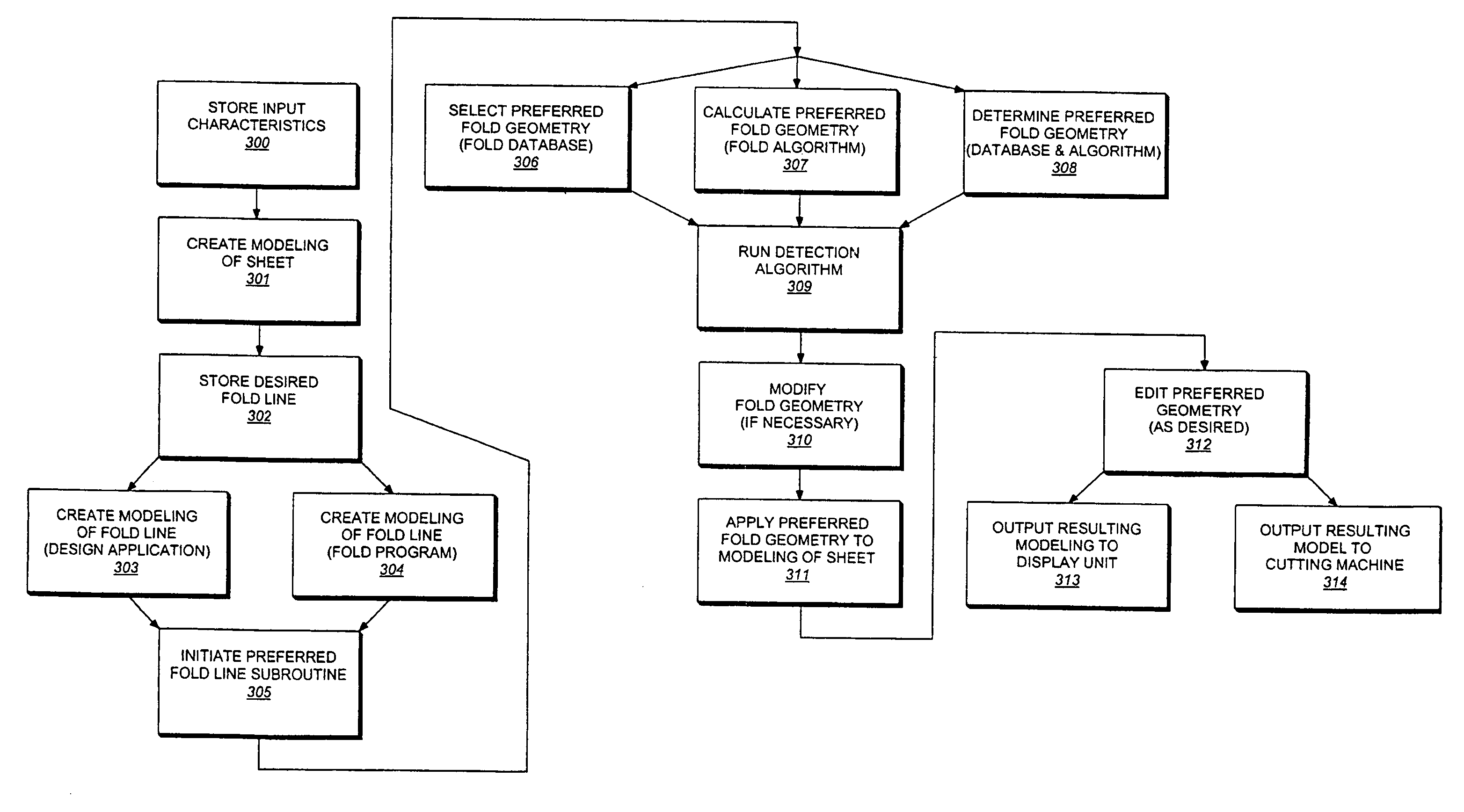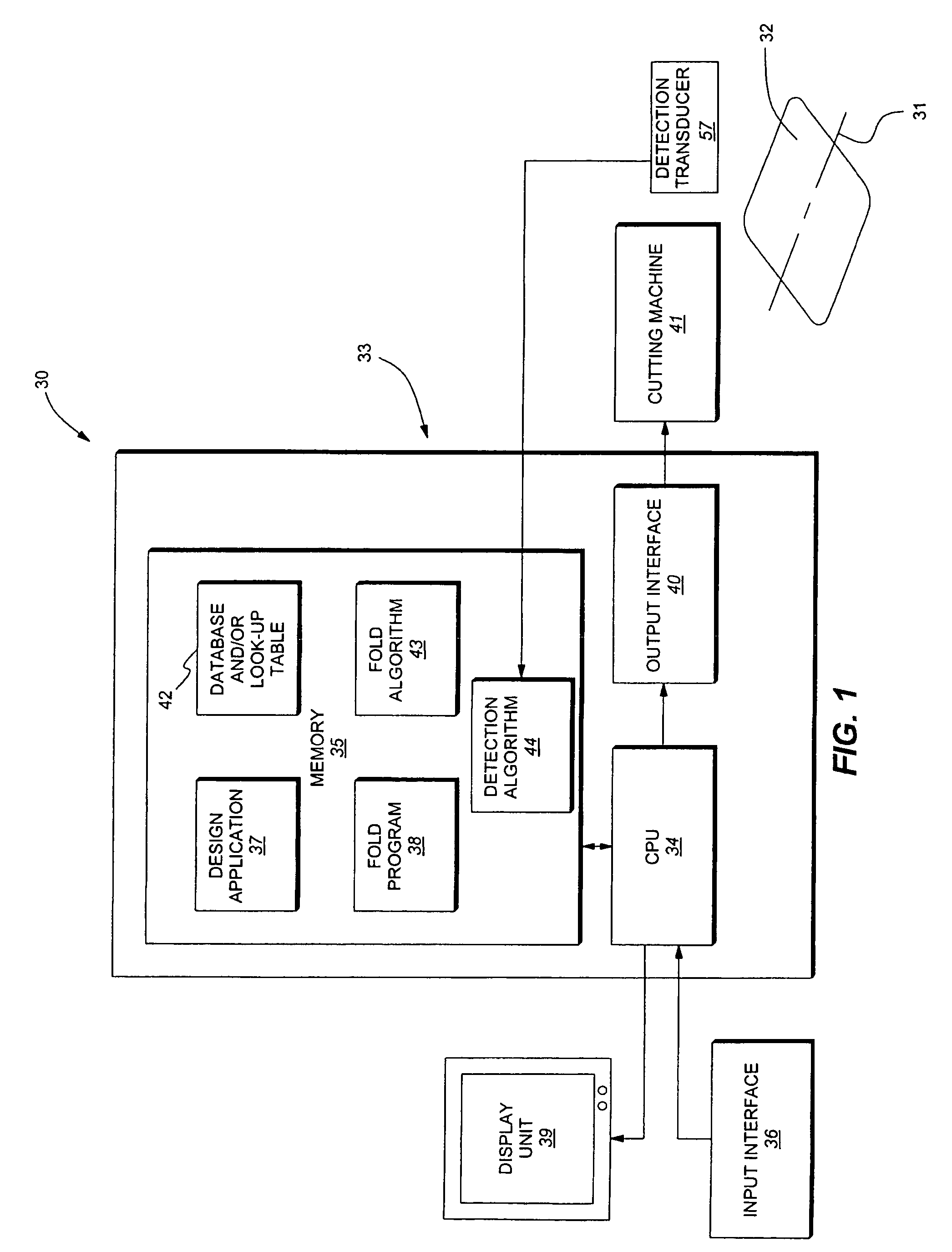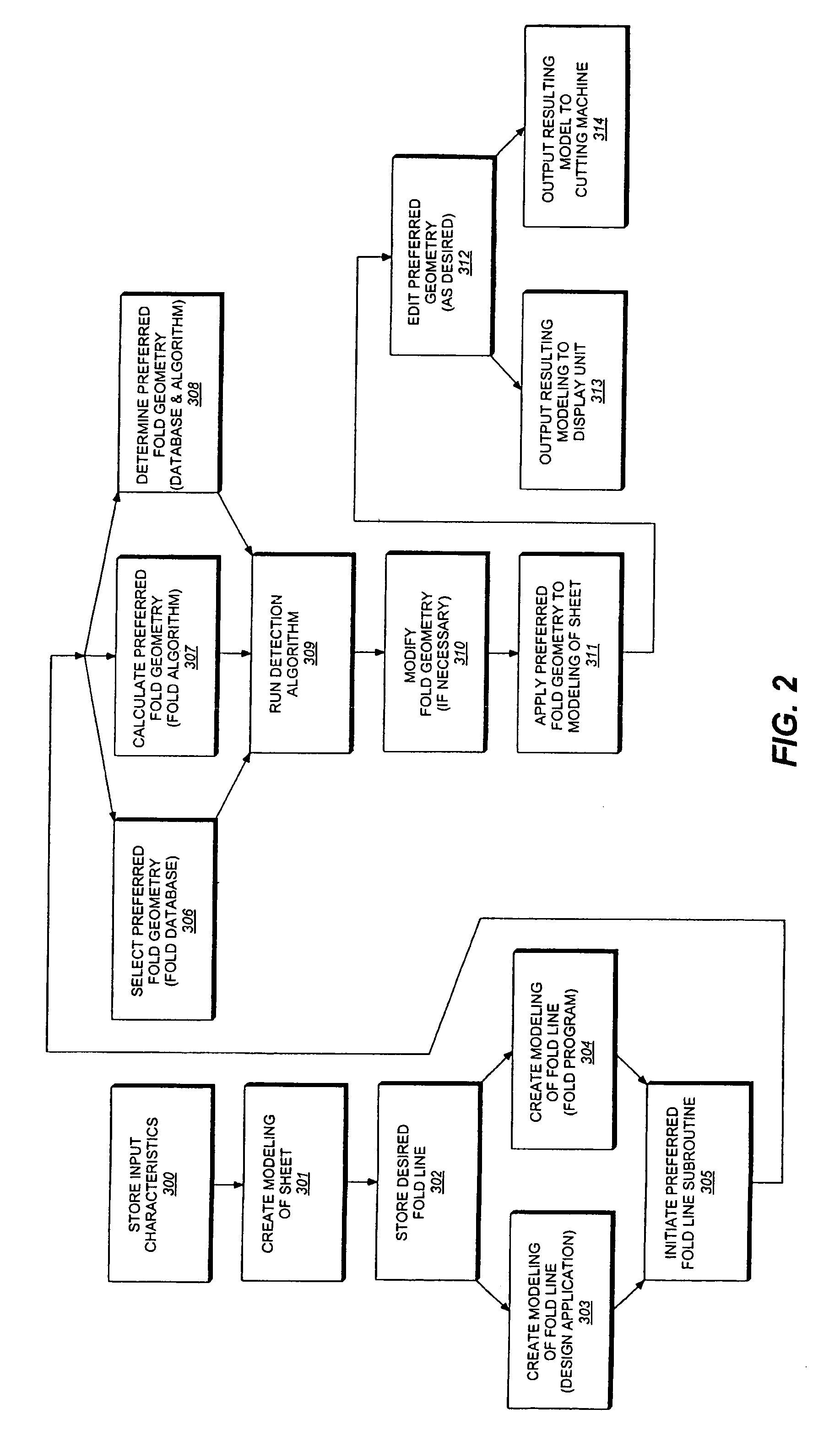Method of designing fold lines in sheet material
a technology of folding lines and sheet materials, applied in the direction of forging/pressing/hammering apparatus, instruments, handling devices, etc., can solve the problems of accumulation of tolerance errors, difficult control of bend locations, and significant cumulative tolerance errors in bending
- Summary
- Abstract
- Description
- Claims
- Application Information
AI Technical Summary
Benefits of technology
Problems solved by technology
Method used
Image
Examples
Embodiment Construction
[0034]Reference will now be made in detail to the preferred embodiments of the invention, examples of which are illustrated in the accompanying drawings. While the invention will be described in conjunction with the preferred embodiments, it will be understood that they are not intended to limit the invention to those embodiments. On the contrary, the invention is intended to cover alternatives, modifications and equivalents, which may be included within the spirit and scope of the invention as defined by the appended claims.
[0035]The present invention is directed to methods, computer program products and systems for designing one or more desired fold lines for a non-crushable sheet of material utilizing various fold geometries and configurations including, but not limited to, those disclosed by U.S. patent application Ser. No. 09 / 640,267, filed August filed Aug. 17, 2000, entitled METHOD FOR PRECISION BENDING OF A SHEET OF MATERIAL AND SLIT SHEET THEREFOR and now U.S. Pat. No. 6,48...
PUM
| Property | Measurement | Unit |
|---|---|---|
| stress concentration | aaaaa | aaaaa |
| thickness | aaaaa | aaaaa |
| strap density | aaaaa | aaaaa |
Abstract
Description
Claims
Application Information
 Login to View More
Login to View More - R&D
- Intellectual Property
- Life Sciences
- Materials
- Tech Scout
- Unparalleled Data Quality
- Higher Quality Content
- 60% Fewer Hallucinations
Browse by: Latest US Patents, China's latest patents, Technical Efficacy Thesaurus, Application Domain, Technology Topic, Popular Technical Reports.
© 2025 PatSnap. All rights reserved.Legal|Privacy policy|Modern Slavery Act Transparency Statement|Sitemap|About US| Contact US: help@patsnap.com



